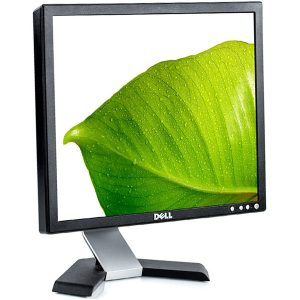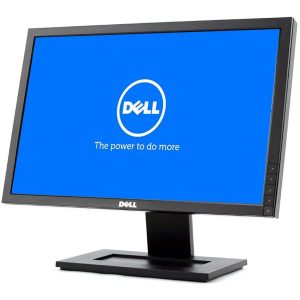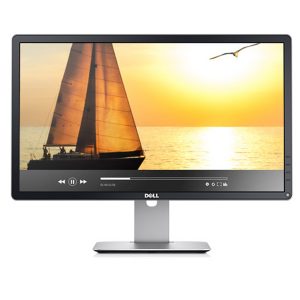HDMI, DisplayPort or VGA? Which is the best?
When we buy a computer, a video card or a monitor, the question is obligatory, HDMI, VGA, DisplayPort or something else?

The video outputs of our devices (not just IT devices) can be varied and very different.
There are four most common types, due to different characteristics that define the individual cards and their possibilities.
Let's discover them together, obviously starting from the "most famous" one, HDMI.
HDMI, the standard
Current market leader, since its presentation in 2002, more than twenty years ago, it has undergone numerous restyling and updates.
The winning features of HDMI are mainly two, the complete digitalisation of the signal and the possibility of transferring audio and video via a single cable.
At the moment it is the winning format, even if not the most innovative, thanks to its great diffusion. The HDMI format is in fact the standard for game consoles, televisions, computers and is present in almost all devices that transmit an audio-video signal (projectors, DVD and Blu-Ray players, etc.).
Also speaking in favor of HDMI is the fact that this port has been available in two further form factors, the mini-HDMI and micro-HDMI ports, usually mounted on portable devices.
The HDMI protocol has been updated several times over time. The latest "stable" version is 2.0 capable of supporting 4K, i.e. the maximum resolution of 2160p, at a frequency of 60 Hz. This frequency is then scalable up to 144Hz for a resolution of 1440p.
Version 2.1 was also introduced for this protocol, capable of reaching a resolution of 10K at 120Hz.

DVI, the switch to digital
Going back in time, before HDMI we find the DVI standard, the first digital video connection system.
There has also been a notable evolution for DVI, with different versions developed over the years. From 1999 to today, 5 different versions of DVI have been developed.
Characteristic of DVI is that it can transport analog or digital signals, without audio, up to a maximum resolution of 2560×1600, fully compatible with FullHD at 144 Hz .
In total there are five versions of DVI:
The difference between these ports is physically visible by the number of pins used on the port.
VGA, the classic that never goes out of fashion
The forerunner of video connections is certainly the VGA cable. This cable, created in 1987, immediately established itself as the standard for video transmission between PC and monitor. Almost 40 years and not hearing it, since VGA is still widely used in “standard” computers and office machines.
Immediately recognizable standard thanks to the blue color, the 15 pins and the two fixing screws, it has a video resolution that is not very high which does not enhance the visual quality. VGA only transmits a video signal, without any type of audio transfer.
DisplayPort, the professional choice
After going back to the past it is time to abruptly return to the present and perhaps even take a leap into the future.
In fact, we are talking about DisplayPort, a port slightly more recent than HDMI but currently even less famous than it.
This port is usually present on machines (PCs and Macs) designed for gaming and video editing. In fact, the DisplayPort supports a maximum resolution of 8K.
It then presents another peculiarity that makes it significantly different compared to other ports, namely minimal signal dispersion. In fact, other technologies begin to lose signal quality after 2-3 meters, while DisplayPort also supports 7, 8 meters in length without any problems.
DisplayPort, like HDMI, supports audio and video transmission.
The advantages of this type of interface are various, in particular:
Differences between HDMI, DisplayPort, DVI and VGA 
Now that you have discovered what the main differences are between these four doors, it's time to do a little comparative analysis.
The VGA format is the most "ancient" and now obsolete of the four. Now used only on office computers and base stations, it is no longer present on high-performance devices.
The DVI format is better than VGA, but increasingly less used.
HDMI, on the other hand, is what we can consider a standard, given that it is present on the vast majority of devices, not just computer ones.
Finally there is the DisplayPort, the elite of video ports, perfect when you want very high definition and transmission at distances precluded by the other three ports.
Gold-plated converters and cables
DO you often hear about gold-plated cables? But do they really work better than those without this "noble" material?
The advantage of the presence of gold is a plus especially in the long term. Gold is a metal that does not oxidize, this peculiarity therefore avoids any degradation of the signal over time.
Another very important topic when talking about video ports and quality is that of converters.
There are connection converters on the market for any type of port, but be careful to choose quality products and use them only when strictly necessary, as each conversion leads to a reduction in the quality of the signal.

So, what is the right exit?
There is no right answer regardless. It all depends on the functionality for which our machine was designed, what its characteristics are and the accessories to be connected.
Generally speaking, if we want the best connection possibilities, the best possible choice is HDMI. If we want to be pioneers we will go with a DisplayPort instead. We will instead choose DVI mainly if you already have a monitor or output device of this type.
Finally we will opt for VGA only when budget will be the main criterion in choosing the computer.
As for the cable, it is better if it is gold-plated, especially if HDMI or DisplayPort, given that our choice will certainly be qualitative and destined to last over time.











